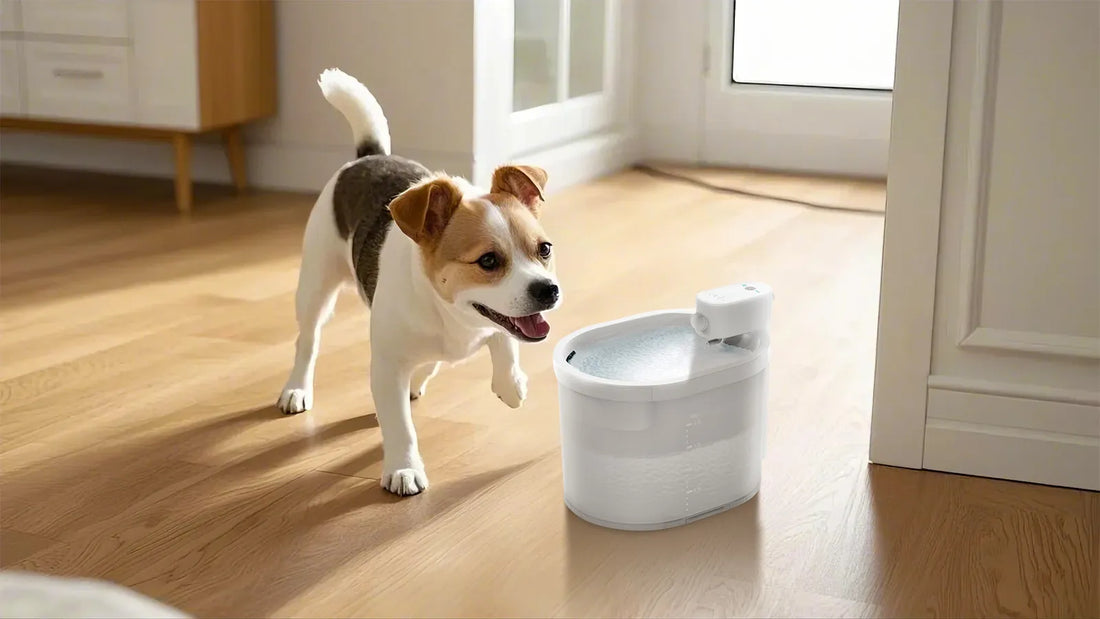It can be alarming and confusing when your dog suddenly becomes afraid of its food bowl. This behavior, while unusual, is not uncommon and can stem from a variety of causes. Understanding the root of this fear is crucial to helping your furry friend overcome it and return to its normal eating habits.
Possible Causes of the Fear
There are several reasons why a dog might develop a sudden fear of its food bowl. These can range from psychological factors to physical discomfort or even environmental changes. Here are some of the most common causes:
1. Negative Associations
Dogs are highly associative animals. If something negative happened around or near the food bowl, such as a loud noise or a scolding, your dog might start associating the bowl with that negative experience. This can lead to fear or anxiety whenever the bowl is present.
2. Physical Discomfort
Physical discomfort, such as dental issues, gastrointestinal problems, or even arthritis, can make eating painful. If your dog associates the food bowl with pain, it might start avoiding it altogether. A visit to the veterinarian can help rule out any underlying health issues.
3. Changes in the Environment
Dogs are creatures of habit, and any significant changes in their environment can cause stress or anxiety. This could include moving to a new home, rearranging furniture, or even introducing new pets or people into the household. Such changes might make your dog feel insecure, leading to unusual behaviors like avoiding the food bowl.
4. Bowl Material or Shape
Sometimes, the issue lies with the bowl itself. Certain materials or shapes might be uncomfortable for your dog. For example, metal bowls can make loud noises when moved, which might startle your dog. Similarly, deep or narrow bowls might make it difficult for your dog to access the food, causing frustration or fear.
5. Past Trauma
If your dog has a history of trauma or abuse, it might develop fears related to specific objects or situations. A food bowl could trigger memories of past negative experiences, leading to avoidance behavior.
How to Address the Fear
Once you have identified the possible cause of your dog's fear, you can take steps to address it. Here are some strategies that can help:
1. Create Positive Associations
To help your dog overcome its fear, try to create positive associations with the food bowl. You can do this by placing treats or favorite foods in the bowl when your dog is not around. Gradually, your dog will start to associate the bowl with positive experiences rather than fear.
2. Change the Bowl
If you suspect that the bowl itself is the issue, consider switching to a different material or shape. For example, a ceramic or plastic bowl might be quieter and more comfortable for your dog. Alternatively, you could try using a flat plate or a shallow dish to make eating easier.
3. Gradual Desensitization
Gradual desensitization involves slowly reintroducing the food bowl to your dog in a non-threatening way. Start by placing the bowl in a different location or using it for non-food purposes, such as holding toys or treats. Over time, your dog may become more comfortable with the bowl and be willing to eat from it again.
4. Provide a Safe Eating Environment
Ensure that your dog feels safe and secure while eating. This might involve feeding your dog in a quiet, low-traffic area of the house where it feels comfortable. You can also try feeding your dog at different times of the day to see if that makes a difference.
5. Consult a Professional
If your dog's fear of the food bowl persists despite your efforts, it may be helpful to consult a professional. A veterinarian can rule out any medical issues, while a certified animal behaviorist can provide tailored advice and strategies to address the fear.
Preventing Future Issues
Once your dog has overcome its fear of the food bowl, you can take steps to prevent similar issues in the future. Here are some tips:
1. Maintain a Consistent Routine
Dogs thrive on routine, so try to keep feeding times and locations consistent. This will help your dog feel secure and reduce the likelihood of developing new fears or anxieties.
2. Monitor Your Dog's Health
Regular veterinary check-ups can help catch any potential health issues early, before they lead to behavioral problems. Be attentive to any changes in your dog's eating habits or overall behavior, as these could be signs of underlying issues.
3. Avoid Negative Associations
Be mindful of creating negative associations with the food bowl. Avoid scolding or punishing your dog near the bowl, and try to keep the feeding area calm and positive.
4. Introduce Changes Gradually
If you need to make changes to your dog's environment or routine, do so gradually. This will give your dog time to adjust and reduce the risk of stress or anxiety.
Helping your dog overcome its fear of the food bowl requires patience, understanding, and sometimes professional guidance. By identifying the root cause of the fear and taking appropriate steps to address it, you can help your furry friend feel safe and comfortable during mealtime once again. Remember, every dog is unique, so what works for one might not work for another. Stay observant, be patient, and most importantly, shower your dog with love and support as it navigates this challenging experience.













